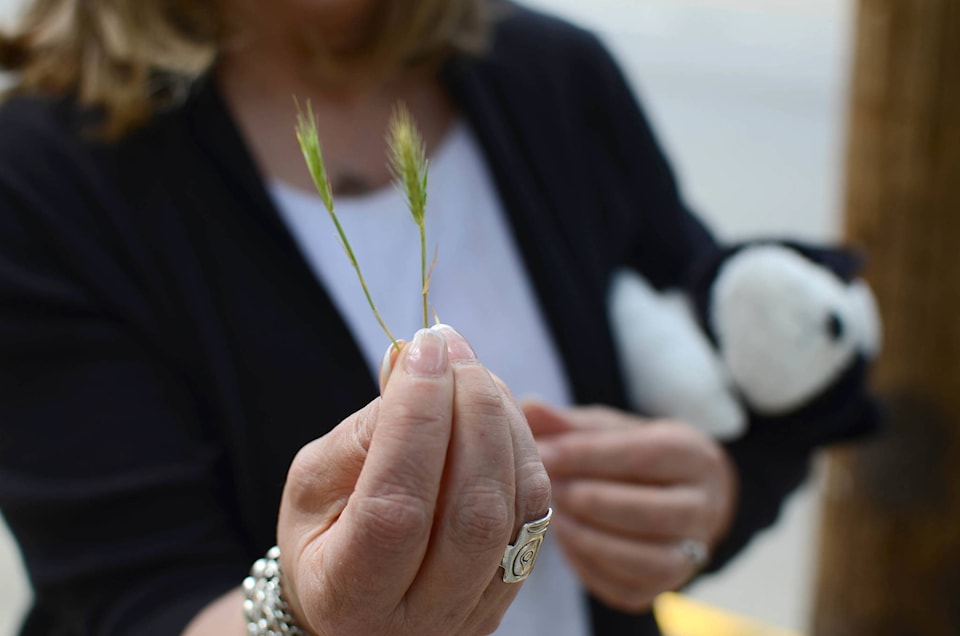Offering more than the usual selection of pet food, toys and treats, A Pet’s Life on Cadboro Bay Road is big on Canadian-made and holistic products – and keeping dogs and cats safe. Owner and operator Eileen Smith runs two cat and dog blogs on APetsLife.ca, with topics ranging from flea control to puppy socialization and all that comes between. Smith also offers Walks ’n‘ Wags Pet First Aid and Safety Program, an internationally recognized course and the longest running one of its type in Canada.
“It’s a 10-hour course, which is unique to our store,” said Smith. She and her husband bought the store back in 1995. At that time, Smith said, there weren’t many premium pet supply stores around. “It was an exciting time for us because we were having struggles with our dogs and wanted to do something more alternative.”
When it comes to health and safety of pets, summer presents many opportunities for injury. Heat, laceration, burns and spear grass are all factors to take into account when hiking, locking dogs in the car, or walking on pavement. Smith points to the latter as a common challenge. “Walking your dog on pavement can actually cause the pads of their feet to burn.”
Dog walkers might be surprised to learn that if the air temperature is as low as 25 C, the pavement temperature can be as hot as 52 C. An air temperature of 30 C changes to 57 C pavement, while 31 C can mean 62 C on the paws. Oak Bay and Greater Victoria experiences all of the above air temperatures each summer, if not on a fluctuating weekly basis.
One quick way to test the pavement, Smith suggests, is to firmly place the back of your hand on the pavement for at least seven seconds. “If you can hold it there and it’s not uncomfortable, then it’s probably an OK temperature for you to start walking your dog. If it’s difficult for you to hold your hand down on the pavement, then it’s difficult for your dog as well with his pads.”
In the event that a dog does get pad burns, or lacerations from broken glass or other sharp objects treaded on sidewalks and trails, Smith outlines the proper way to bandage a foot.
“Take some clean gauze pads and put them on top of the affected area, then take a gauze roll and wrap around and over the end of the foot. It’s important when you’re wrapping a dog’s foot in a bandage that covers not only the wounded area but over the front of the foot as well, so that no contamination gets into the wound.” The bandage should come past the first joint on the foot, so that the bandage does not fall off as soon as the dog stands to walk.
Spear grass is also one to look out for when walking dogs this time of year. Speargrass, a generic title encompassing common names such as needle grass, foxtail grass, silver spike grass and porcupine grass, works itself into dogs’ pads, bellies, ears, noses and eyes, causing skin damage, immense pain and possible infection. If left untreated, spear grass can be life-threatening.
“It’s a really good idea after you’ve been out walking your dogs to check them in the pads,” Smith said. On her blog, Smith warns that if dogs repeatedly shake their head, scratch their ears, lick or chew at a paw or whine, they may have spear grass. A thorough check after hiking, visiting the beach or any other grassy areas is the best way to ensure no serious injuries happen.
Other things to remain cautious about this summer are heat stroke and shaving coats.
“It’s important to remember that even if you car is in the shade with the windows open and your dog has access to water, if it’s over 40 degrees, your dog no longer has a natural ability to cool themselves,” Smith said. “We recommend the safest place for your dog on these summer days is at home in a well-ventilated area of your house with access to plenty of fresh cool water.” Exercising dogs in the cool of morning and evening is best. At this time, pavement is often at a lower temperature as well.
Smith says to avoid clipping double coats when shaving.
“If you have a dog with hair that’s more human-like, like a poodle, the hair continually grows and you need to get it clipped down. That kind of a coat can be shaved down to keep them cool in the summer, just like we might want to do a hair cut and get our hair up off our necks,” Smith said. However, double-coated dogs, including golden retrievers and German shepherds, have hair designed to insulate in heat or cold. “Lots of people, well-intended, shave their dogs down in the summer thinking it’ll keep them cool. In fact, you’re actually taking away that protective layer that helps keep their body temperature regulated.”
Smith offers training in all of the above in the Walks’N’Wags first aid program. The next class is set for Sept. 23.
editor@oakbaynews.com
